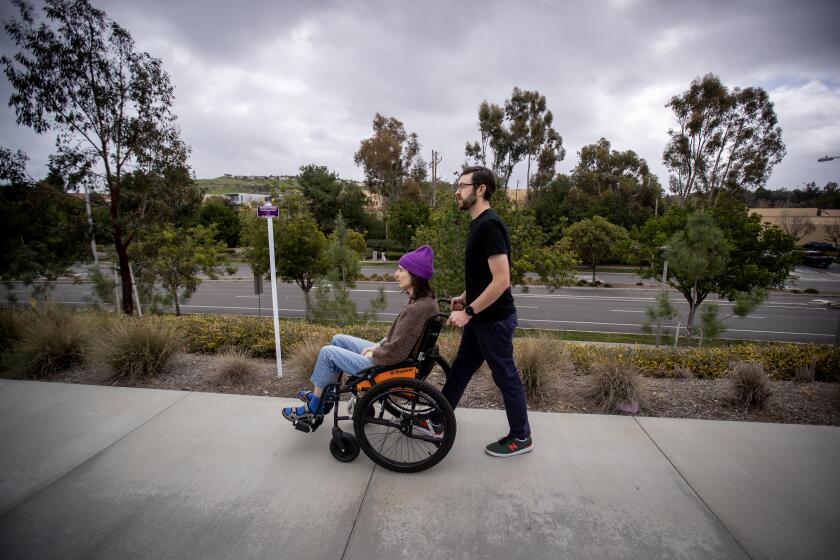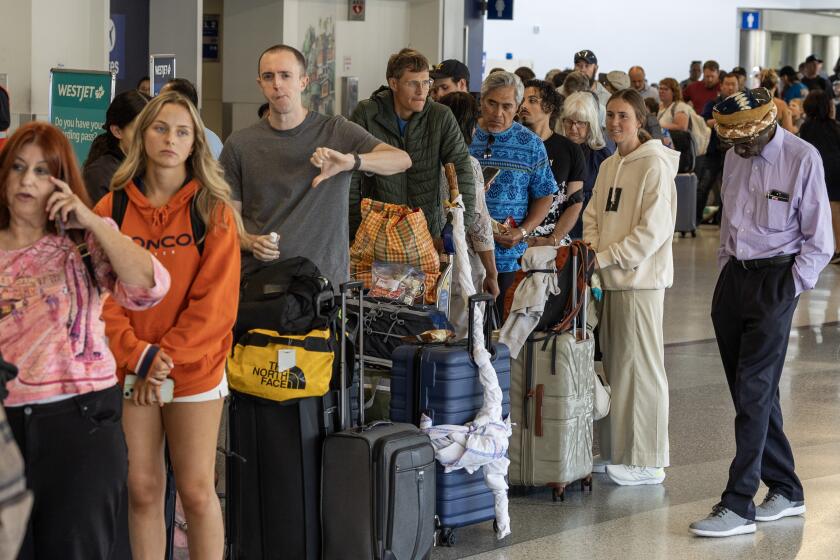Q&A: Once shunned, Greg LeMond returns to biking world and road to success
Greg LeMond, America’s original superstar cyclist, is back.
After years of being shunned by the cycling world for asserting in 2001 that Lance Armstrong was using performance-enhancing drugs, the now-vindicated three-time Tor de France winner (1986, ’89 and ‘90) is on a roll. He hosts two Tour-related telecasts; founded and sold LeMond Fitness, maker of several top-ranked home exercise products; is rebuilding his long-shuttered brand of high-end road, mountain and adventure bikes; and has co-written “The Science of Fitness” with biologist Mark Hom.
The book focuses on mitochondria, the tiny motors in each cell that power muscular movement. The topic is close to LeMond’s heart, as he was forced to retire early because his own mitochondria was (and still is) being poisoned by 35 lead pellets that were embedded in his heart lining and liver during a 1987 hunting accident. [He had some removed; the remaining pellets are in risky spots, such as in his heart lining.]
Today, the 53-year-old father of three plays tennis, fly-fishes, lifts weights, and limits his intense riding and cross-country skiing to about 60 minutes at a time to minimize toxic lead shedding.
Why were you so sure Armstrong was doping, and willing to say that when no one else dared?
There’s been a lot of smoke and mirrors in cycling the last 20 years, a lot of junk science. And my problem is that I know the science. I knew that Armstrong’s aerobic capacity — your VO2 max, your engine — was below that of the average pro. To explain how he could consistently win, people would say that Lance was more mechanically efficient than everyone else because of his new training secrets. I found this insulting to other athletes. Are you telling me that Lance made up a 10% to 20% aerobic deficit on mechanical efficiency in a sport that has been around for a hundred years? The human body doesn’t change. Suddenly he discovers this new revolutionary technique? Come on! There are no secrets!
Your stance against Armstrong brought you derision from the bike and sports worlds, your bike brand shut down and many were saying that you were just jealous. What was it like?
I’m just happy it’s over. ... You know, psychological stress is many times worse than physical stress. Post-traumatic stress syndrome is when you’re highly under stress for more than 60 or 90 days, and I went through quite a few years of that. It affects your health pretty dramatically. I’d get worn out, fatigued. Everything gets you — and you can’t just hyper-compensate through exercise. And as much as I’d love to, I can’t just hop on the bike and ride the stress away for four or five hours, anyway. That is physiologically bad for me.
Did you just say that the three-time Tour de France winner can’t ride a bike?
I can, but whenever I do, the lead pellets in my body leak, essentially poisoning me. If I ride hard, they leak more. If I ride hard for over an hour, way more, so my doctors warned me to keep it to an hour. I keep doing research to figure out how to get the lead out [after activity]; my wife has got me taking pectin because a Russian study finds that it binds to lead. I’ve read about some toxin-removing nanotechnology out of the Bay Area that sounds hopeful. Ironically, when I broke my neck in a car accident last year and was laying in bed for three months, my blood was cleaner than it has been since I retired in 1994.
Describe your workout.
In an hour, I’ll do five, six, seven 30-second sprints. Very specifically, 30 seconds builds your endurance and power and has lots of hormonal system benefits.
Remember that sprints work for everybody. They’re hard but over fast and effective in every aerobic activity — cycling, running, swimming, cross-country skiing. Just 15 minutes a day of 30-second sprints puts much greater demands on your body than a long, slow hour.
I think cycling is the ideal workout for most because it has the addictive inertia, rhythm, fun, social interaction that makes it very doable for out-of-shape people to get their heart rates up, whereas running hard takes a pretty physically fit person. On a bike, just find a hill nearby and climb it fast, or input more resistance on your exercise bike and go for it.
Intensity changes your hormones, your insulin resistance, your mitochondria, raising their density and efficiency, upgrading your muscle power within a couple days. And it has a huge effect on brain function. People don’t know this, but all aerobic exercise actually makes you smarter, more organized and more successful.
Smarter? That almost sounds too good to be true.
Well, I know it personally. I was an energy-packed kid. I had ADD [attention deficit disorder] — I was bouncing off the walls. School was painful for me. My fifth-grade teacher started crying when I saw her 10 years later, when I had become a champion cyclist. She said, “I thought you’d end up in prison” — and wasn’t joking. Exercise and cycling saved my life. Exercise is great for kids — helps them focus, calm down, do better in school, stay healthy. It’s why I’m such a big advocate of restoring PE classes to schools across the country. .



